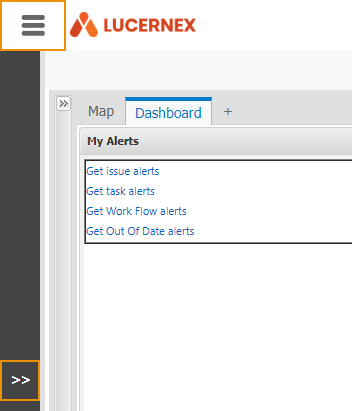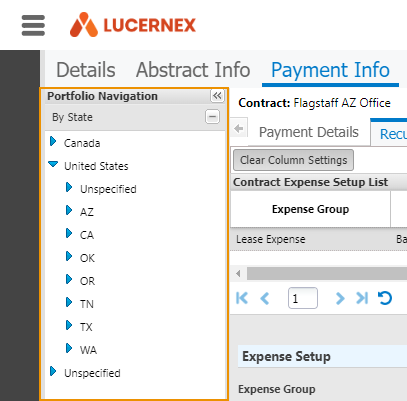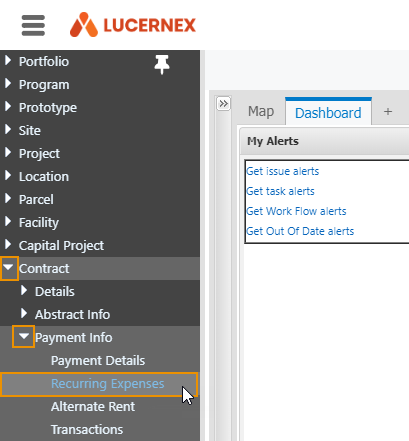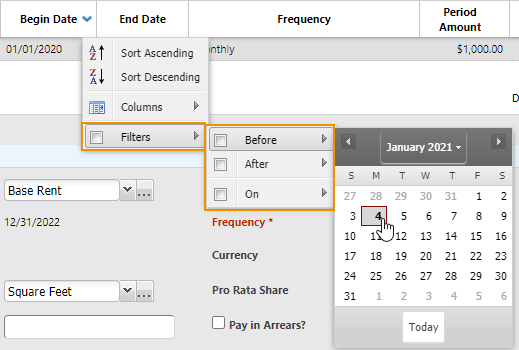Navigate
This section describes the ways you can navigate Lucernex and introduces you to primary functionality.
Using the Navigation Pane you can access the main pages of Lucernex. When you first sign in, the Navigation Pane is collapsed on the left side of the page.
-
Do one of the following:
-
Click Hamburger button in the header bar, or
-
Click Arrows in the menu bar.
The Navigation Pane opens. To close the Navigation Pane, click Hamburger button again.

-
-
Click the carets in the menu to navigate to the appropriate page.
You can also right-click a page's name to open a page in a new tab.
When you first open the Navigation Pane, it contains a menu of the modules you have access to. If you click the name of a module, you are taken to the Details > Summary page of the last record you viewed in that module. The Details > Summary page contains high-level information about the entity.
When you expand modules in the menu, the module's sub-modules become visible. These sub-modules break the module into themed categories—for example, your lease abstract information is contained in the Abstract Info sub-module of the Contract module. When you click a sub-module in the menu, the Details page of that sub-module opens.
If you expand the sub-modules in the menu, you can see the sections that belong to the sub-modules. Each sub-module has several sections. These sections are where you perform actions and store data relevant to your work flow.
Pictured below is a screen shot of the Dashboard with the Navigation panel open. The user has clicked the carets in the menu to open the Contract > Payment Info section, and is about to select the Recurring Expenses page.
When you have accessed the page you want to view, you can navigate through the module using the tabs at the top of the page.
Additionally, some sections have sub-pages. To access these pages, select the appropriate page from the field to the left of the Actions menu on the right side of the page.
Pictured below is the Contract > Payment Info > Recurring Expenses page. The drop-down menu is boxed in orange, to make it more visible. The drop-down menu appears to the left of the Actions menu on the right side of the page.
-
To navigate to a specific entity, choose between two options:
-
To locate the entity in the Portfolio Navigation menu:
-
Click >> on the top of the Portfolio Navigation menu.
The Portfolio Navigation menu opens.
-
Click the carets in the menu to navigate to the appropriate entity.

-
-
Follow the Advanced Search procedures below.
-
By default, when you navigate between top-level tabs in Lucernex, the system will navigate you to the last entity you viewed in the module. If the Related Entity Navigation setting is enabled, the system will prompt you to select from a list of entities related to your current entity when you navigate between modules. It is our best practice recommendation to use the Related Entity Navigation setting.
Pictured below is the Location > Details > Summary page. The Available Entities window is open, and several leases are listed which are related to the location.







 to open a window. All available options will be available in this window. You can then use the Table Search functionality to search for the appropriate option. When you find the option you are looking for, click the item to select it.
to open a window. All available options will be available in this window. You can then use the Table Search functionality to search for the appropriate option. When you find the option you are looking for, click the item to select it.  next to a field.
next to a field. 